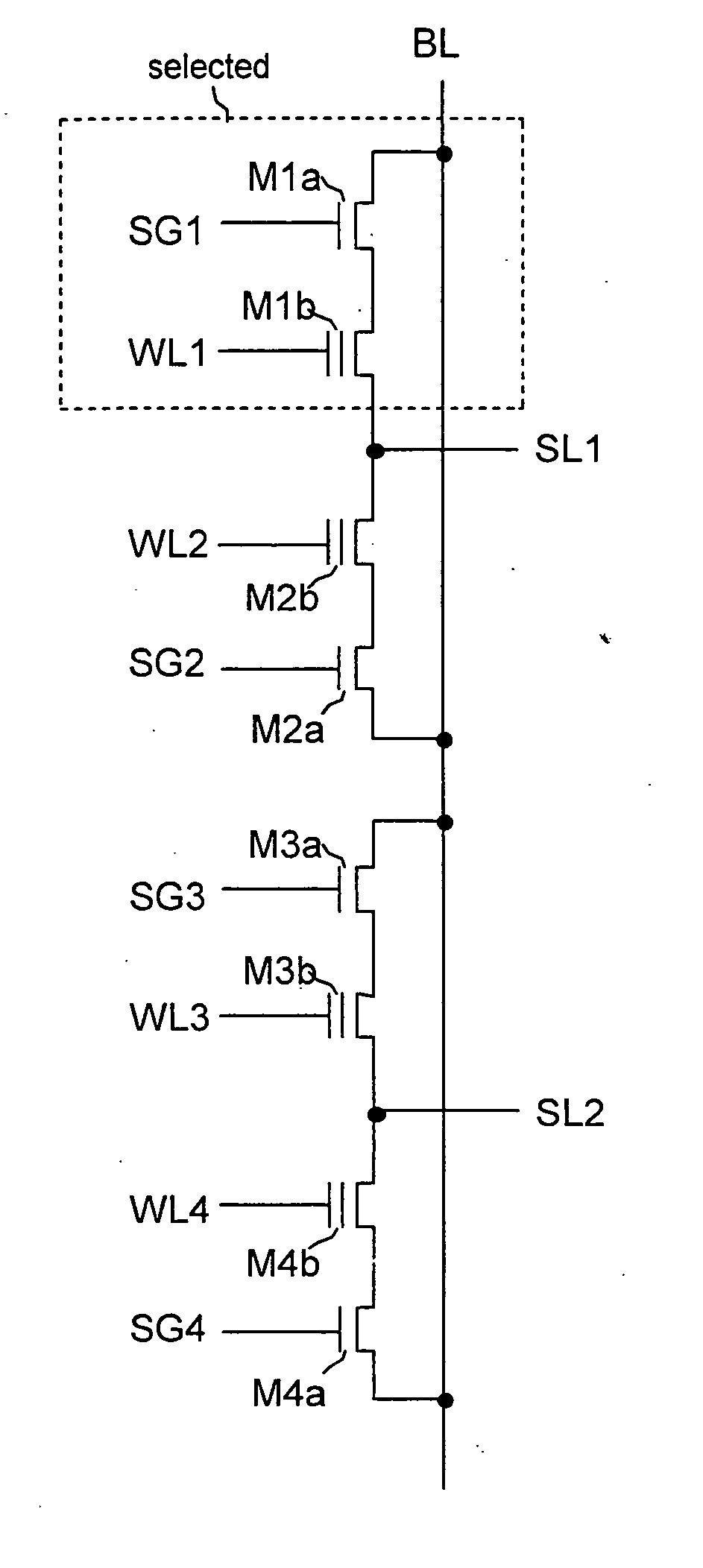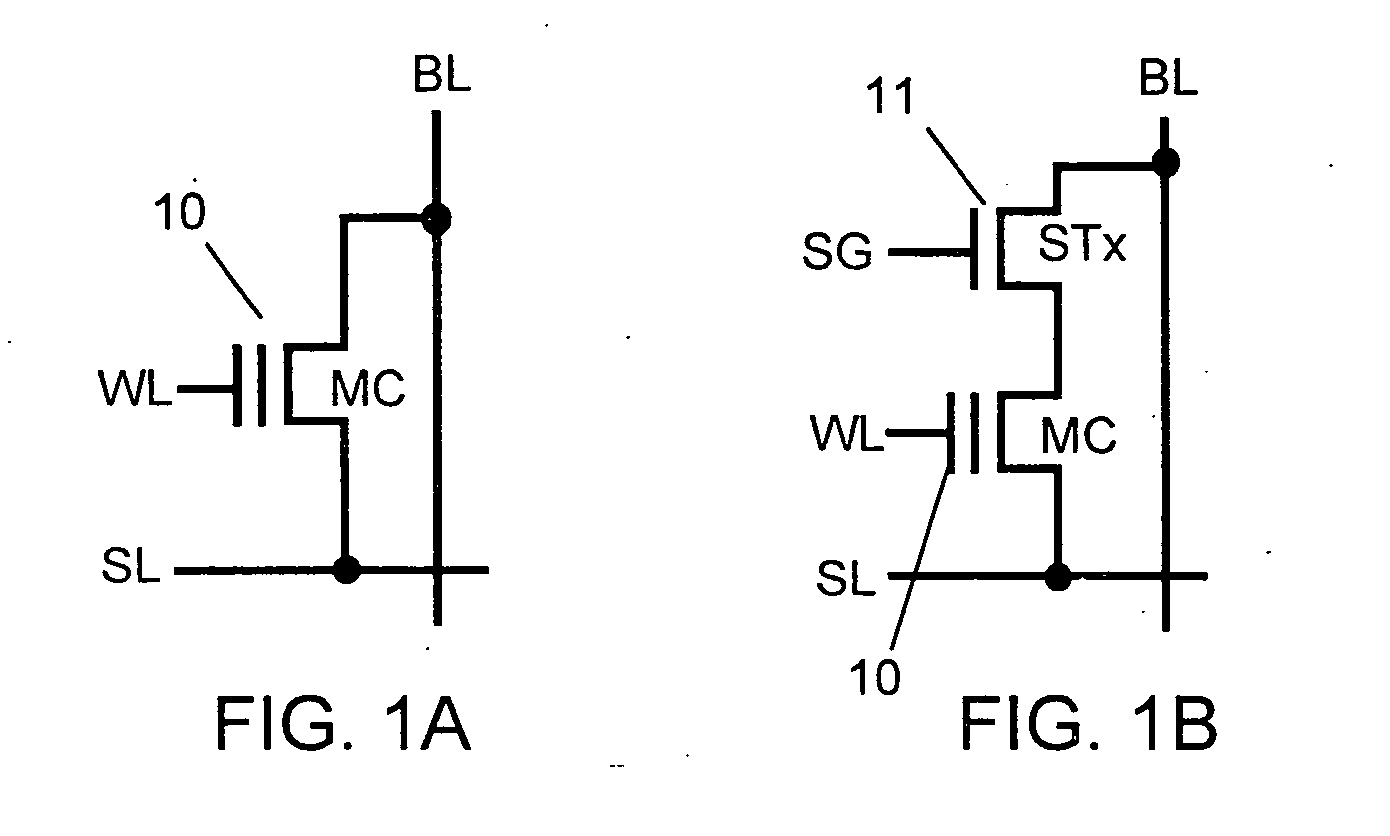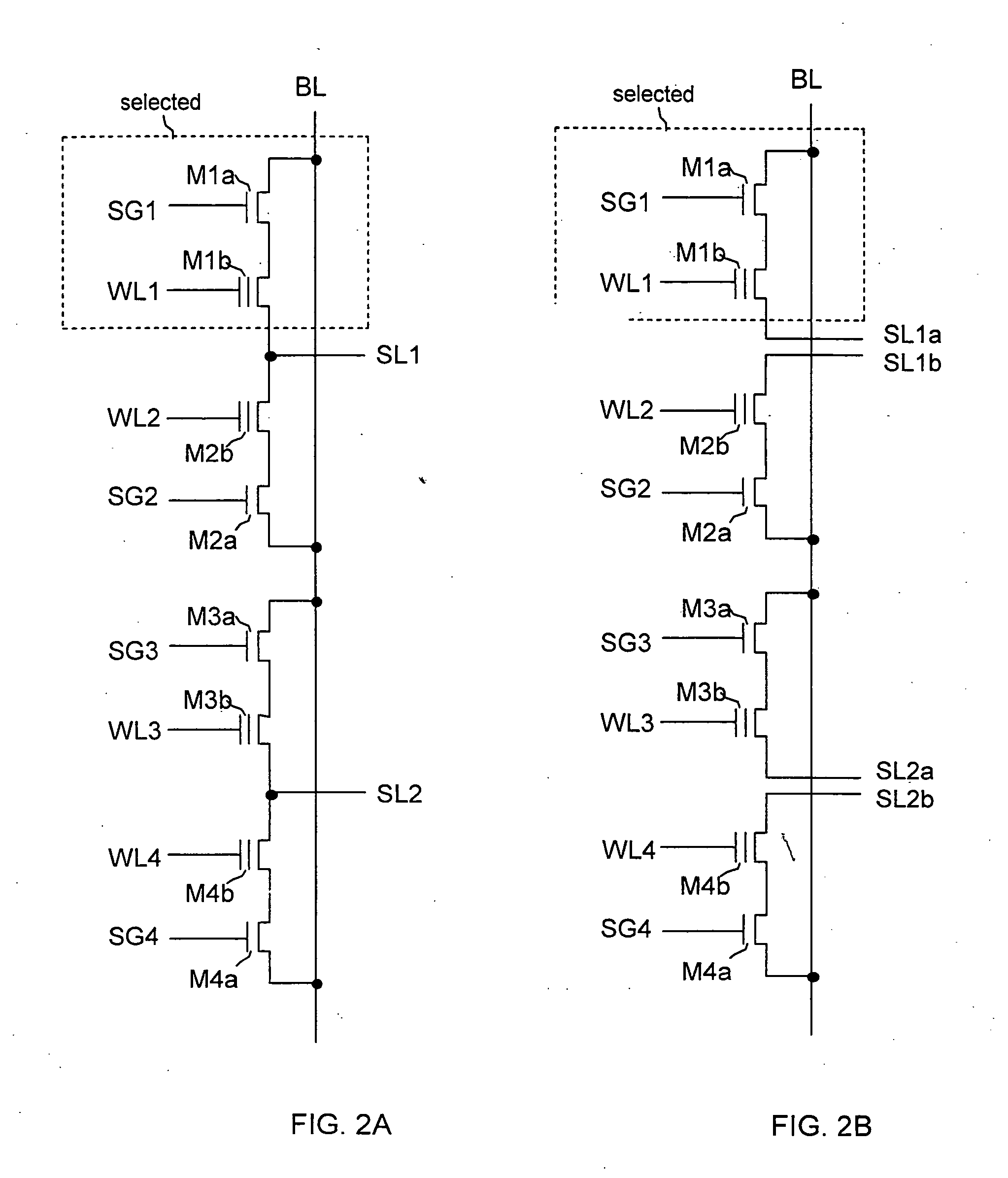Combination nonvolatile memory using unified technology with byte, page and block write and simultaneous read and write operations
a non-volatile memory, unified technology, applied in the field of semiconductor memory, can solve the problems of drastic system performance degradation, difficult use of flash memory to store both program code and data, and inconvenient us
- Summary
- Abstract
- Description
- Claims
- Application Information
AI Technical Summary
Benefits of technology
Problems solved by technology
Method used
Image
Examples
Embodiment Construction
[0066] In FIG. 1A is shown a schematic diagram of the Flash memory cell MC of the present invention. The stacked gate transistor 10, which forms the memory cell, has a source diffusion connected to a source line SL and a drain diffusion connected to a bit line BL. The control gate of the stacked gate transistor is connected to a word line WL. The Flash cell of the present invention can be made smaller by reducing coupling ratio from Poly2 to floating-gate and by increasing word line voltage to maintain the same program gate voltages. The erase and program conditions of Flash are listed in Table 1 below.
TABLE 1VoltageBLWLSLBulkSchemeErase0−18 V00FN (Channel)Program+5V+10 V00CHE
[0067] Shown in FIG. 1B is shown a schematic diagram of a two transistor EEPROM memory cell of the present invention. The Flash and EEPROM memory cells are fully described in Provisional Application Ser. No. 60 / 426,614 noted above which is herein included by reference. The stacked gate transistor 10 used in t...
PUM
 Login to View More
Login to View More Abstract
Description
Claims
Application Information
 Login to View More
Login to View More - R&D
- Intellectual Property
- Life Sciences
- Materials
- Tech Scout
- Unparalleled Data Quality
- Higher Quality Content
- 60% Fewer Hallucinations
Browse by: Latest US Patents, China's latest patents, Technical Efficacy Thesaurus, Application Domain, Technology Topic, Popular Technical Reports.
© 2025 PatSnap. All rights reserved.Legal|Privacy policy|Modern Slavery Act Transparency Statement|Sitemap|About US| Contact US: help@patsnap.com



